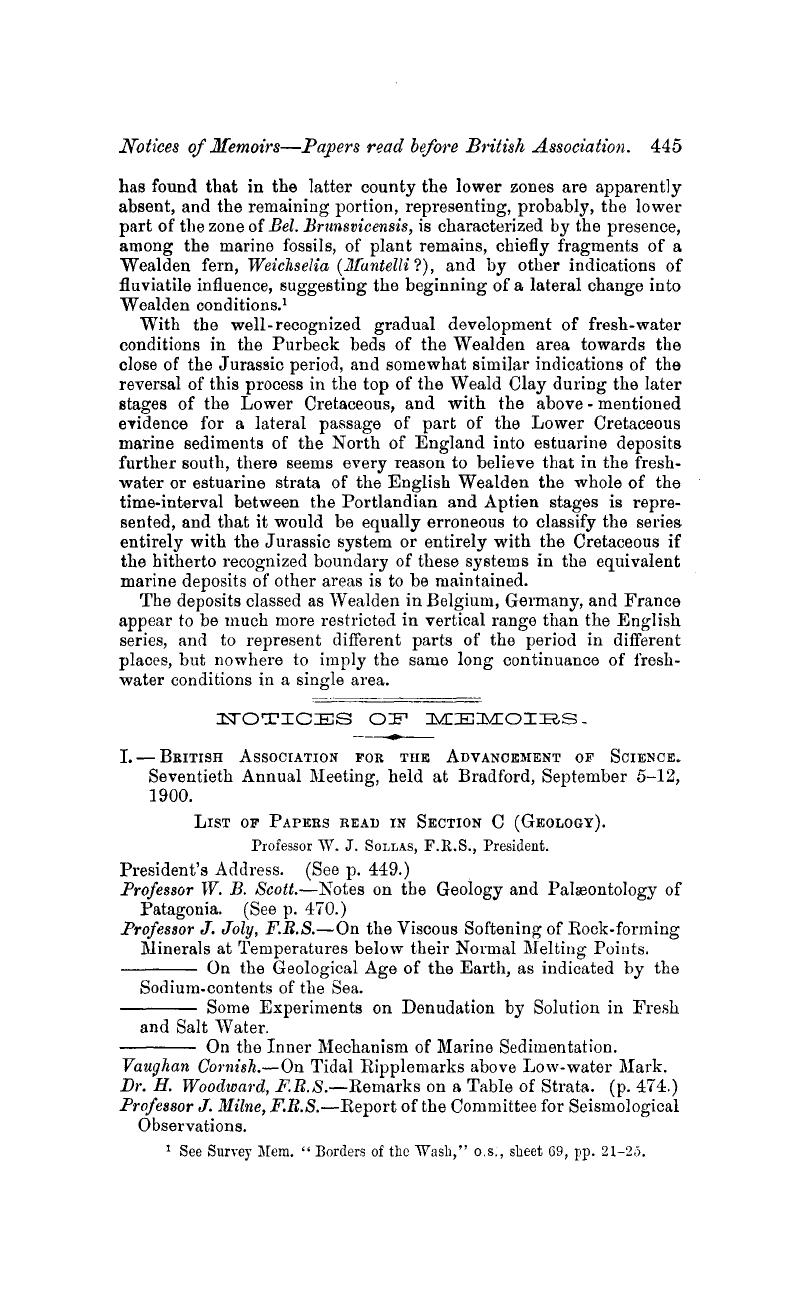No CrossRef data available.
Published online by Cambridge University Press: 01 May 2009

page 458 note 1 Tenth Annual Report U.S.Geol. Survey, 1888–1889, p. 457.Google Scholar
page 459 note 1 With some exceptions, notably Mr. C. Davison, a consistent supporter of the theory of contraction.
page 461 note 1 According to Professor Penck ![]() foot.Google Scholar
foot.Google Scholar
page 464 note 1 “Ueber untersilurische Fische”: Mélanges Géol. et Paléont., vol. i (St. Petersburg, 1899), pp. 9–14.Google Scholar
page 465 note 1 Bulletin Geol. Soc. America, vol. iii (1892), pp. 153–171.Google Scholar
page 465 note 2 Traquair, R. H., “Report on Fossil Fishes collected by the Geological Survey in the Silurian Rocks of the South of Scotland”: Trans. Roy. Soc. Edin., vol. xxxix (1899), pp. 827–864.Google Scholar
page 465 note 3 Traquair, R. H.: Geol. Mag., 04, 1900.Google Scholar
page 467 note 1 To these I myself recently added a fourth, the Anaspida, for the remarkable Upper Silurian family of Birkeniidæ, but as these throw no light as yet on the problem of Descent they may at present be only mentioned.
page 469 note 1 Geol. Mag., 03, 1900.Google Scholar
page 469 note 2 “Die Entstehung der Landthiere”; Leipzig, 1891.Google Scholar
page 470 note 1 Read before the British Association, Section C (Geology), Bradford, Sept., 1900.
page 471 note 1 Read before the British Association, Section C (Geology), Bradford, Sept., 1900.
page 473 note 1 Read before the British Association, Section C (Geology), Bradford, Sept., 1900.
page 474 note 1 Exhibited and explained before the British Association in Section C (Geology), at the Bradford Meeting, September, 1900.